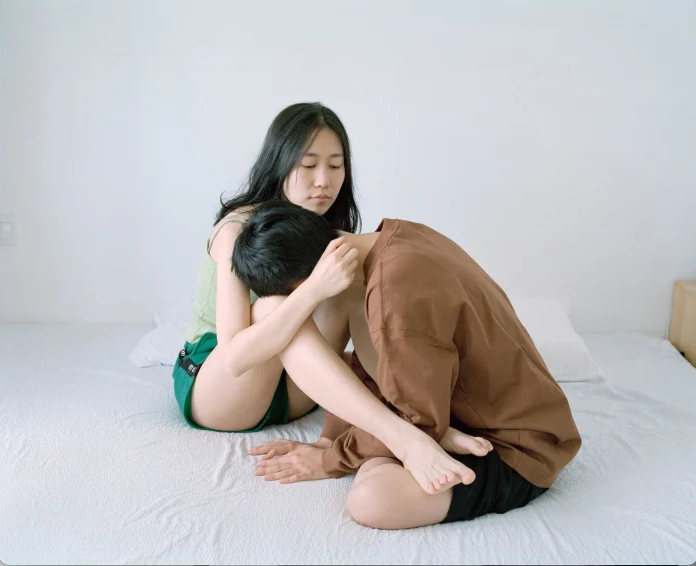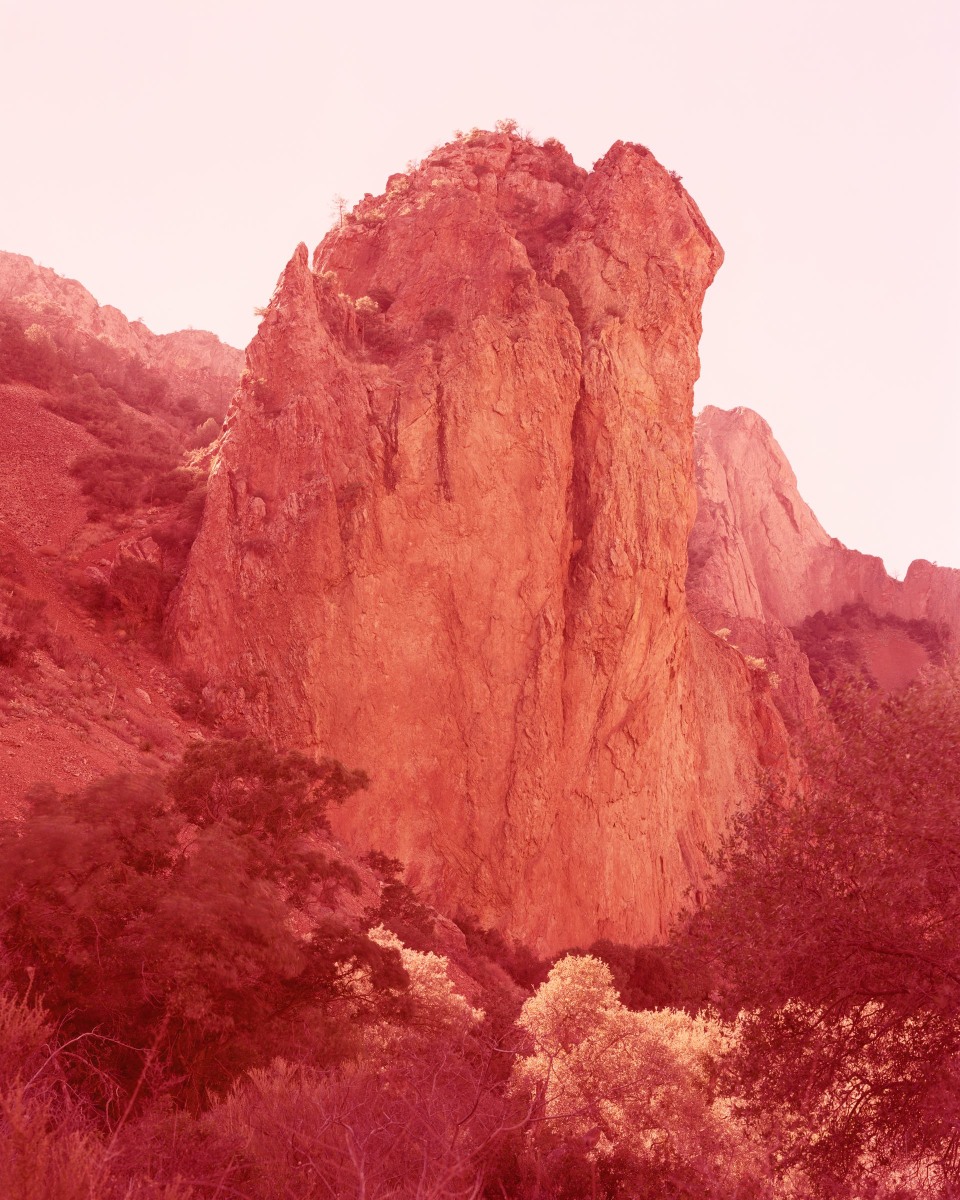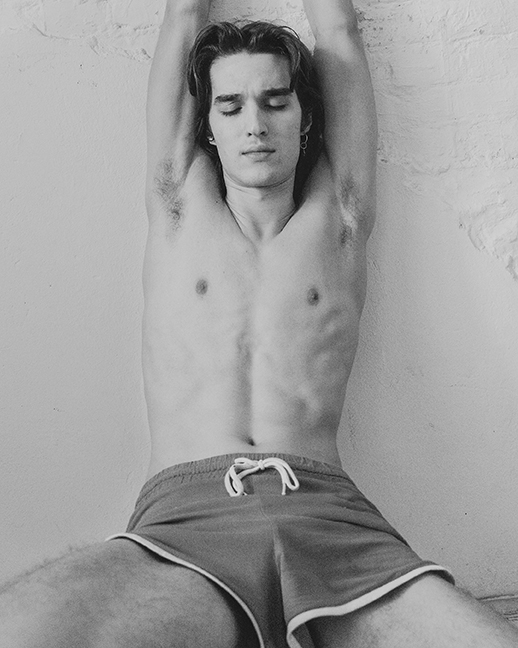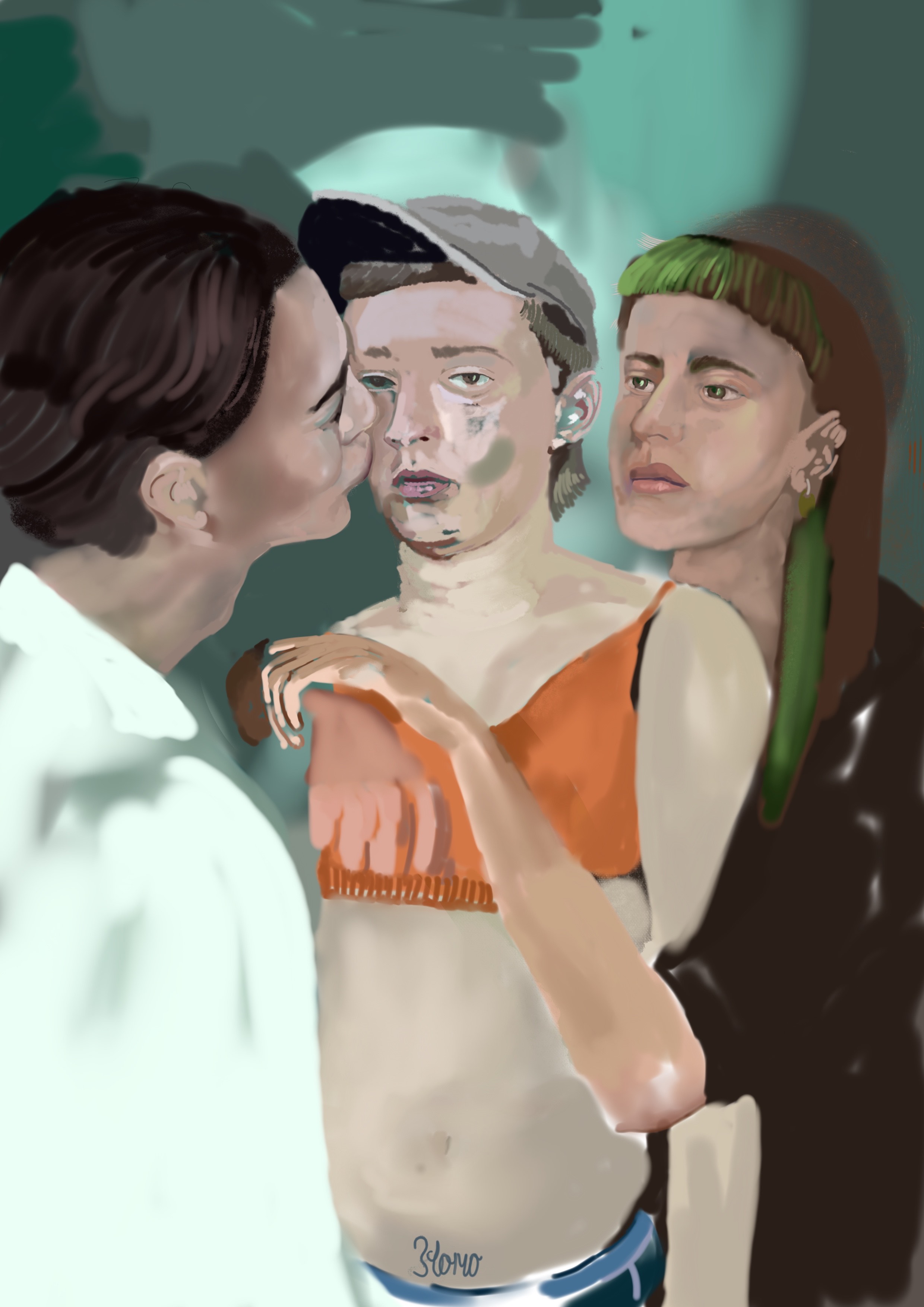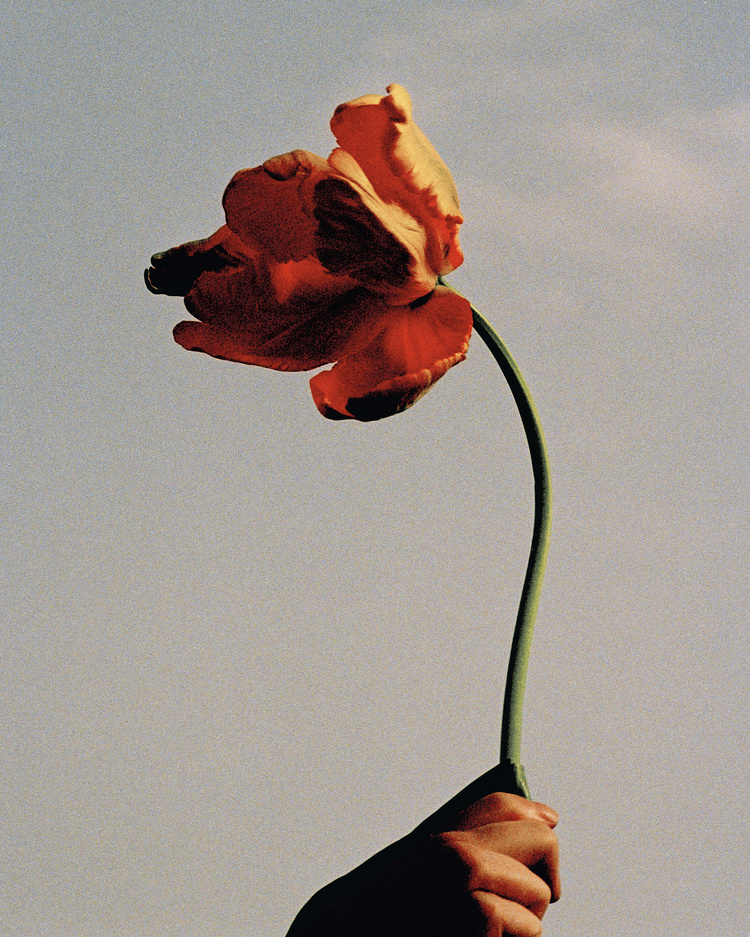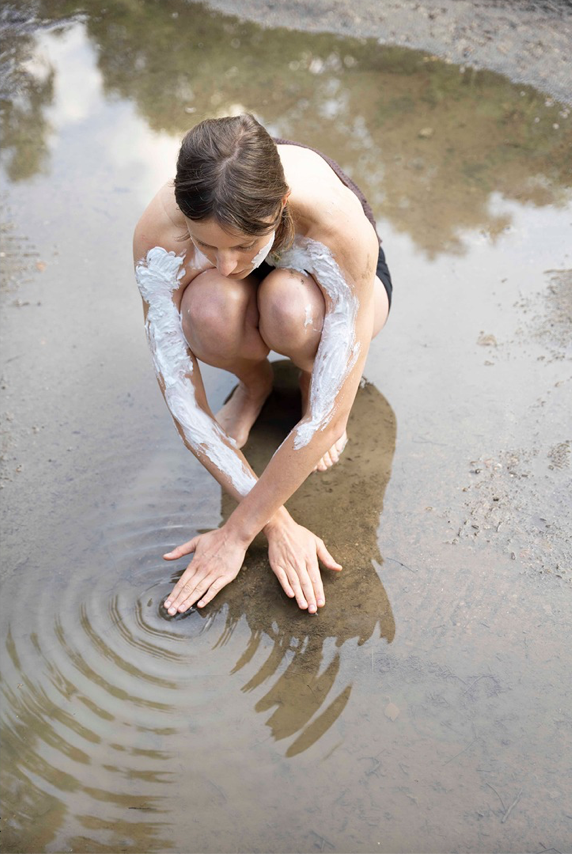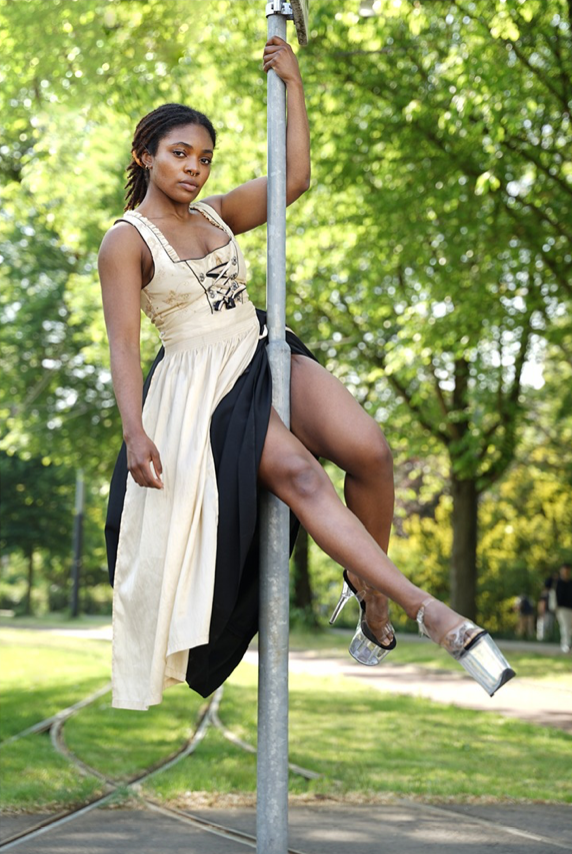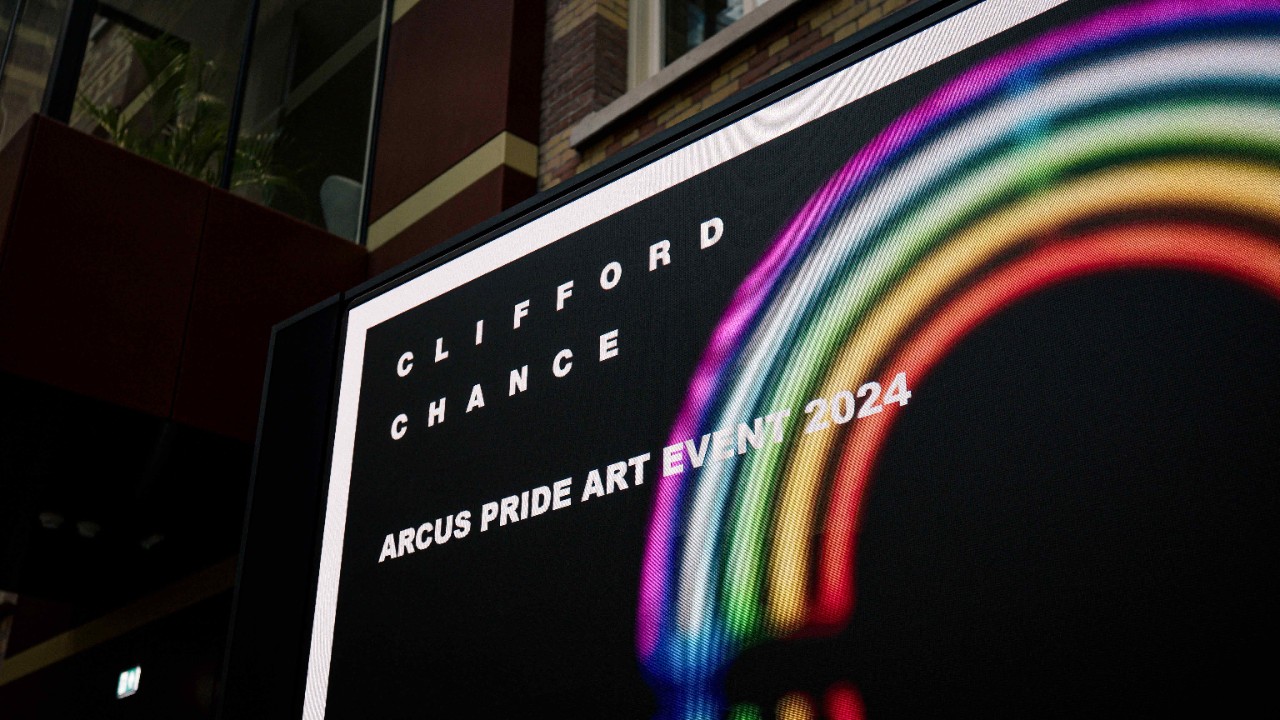Clifford Chance Amsterdam proudly presents the Arcus Pride Art Exhibition 2024. The exhibition is designed to challenge perceptions and provoke thought and conversation through artworks from various disciplines that showcase the fluidity of gender and sexual diversity. It will run from early June until mid-July at Clifford Chance’s Amsterdam office and has been organised in close collaboration with the Young Collectors Circle.
Pride without Borders
This year's theme, Pride without Borders, emphasises the idea that Pride and identity know no boundaries. This is reflected in the background of each of the seven artists who showcase their work in this exhibition. Each artist uniquely expresses themes of gender and sexual diversity, creating an exciting mix of established and emerging talent.
The rights of queer communities are under threat worldwide. Homosexuality is, for example, still illegal in sixty-four countries, with twelve of those imposing the death penalty. Even in countries where it is legal, physical safety is not always guaranteed. That is why it is crucial to offer visibility to artists from LGBTQIA+ communities and their allies – and to celebrate them. Their unique voices and lived experiences provide a fuller understanding of what it means to be human.
However, it extends beyond this: highlighting queer experiences can help us understand other issues better. Subjects like masculinity, social exclusion, heteronormativity or even climate change can be viewed through a so-called queer lens. It forces us to rethink norms and values that are often taken for granted. In academia, this is known as 'queering' information. If the term 'queer' is broadly interpreted in its original context – as contrarian, different, strange or twisted – it allows us to challenge certain conventions. Binary oppositions such as male-female and gay-straight, for example, are not universal or natural in any sense. Rather, they are socially constructed and historically determined. Analysing these can lead to a more nuanced approach to human behaviour and identities. Various museums and research institutes worldwide adopt this methodology, incorporating queer perspectives, history and culture, and actively questioning norms and underlying societal structures.
In this exhibition, for instance, David Benjamin Sherry uses a queer gaze to examine climate change and myths about the American landscape. Alex Avgud compares the exclusion he felt as a gay man in Russia with his lived experience as a migrant in the Netherlands. Linus van der Maas explores heteronormativity, examining in different ways how heterosexuality sets societal norms and its implications for queer communities.





